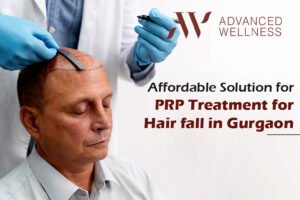5 Things to Know Before Getting PRP Treatment for Hair Loss
Today many people are going through the problem of hair loss and they are advised to get different treatments and techniques one of which is PRP. But before taking PRP treatment, it becomes necessary to know a few things like the working of platelets, knowing the therapy process, the benefits associated therewith, how to maintain PRP results and who all are ideal candidates for the treatment.
This know-how will help you make the right decision and know what the right way to get PRP done is.
1. Know How Platelets Work
It is important to know how the main function works prior to scheduling a consultation for the treatment. Platelets are a component of blood, along with red and white blood cells. When a person sustains a cut or wound, the platelets are some of the body’s “first responders” that arrive to stop the bleeding and promote healing.
Researchers theorized that if they could extract concentrated platelets and inject them into damaged areas of the body, they could accelerate healing.
PRP contains a range of growth factors and proteins that speed tissue repair. As some types of hair loss result from damage to hair follicles, researchers initially hypothesized that PRP could help regrow hair by reversing that process.
Concentrating platelets in a certain area for healing purposes has been used since the 80s and is fairly new as a hair loss treatment.
2. Understand the PRP Therapy Process
There are several steps in PRP therapy for hair loss. During your PRP treatment you can expect the following:
- A medical professional draws blood from a vein in the arm.
- They place the blood sample in a centrifuge.
- The centrifuge spins the blood, separating its components.
- A medical professional extracts the platelets using a syringe.
- A doctor injects the platelets into targeted areas of the scalp.
The entire process may take about 1 hour, and several sessions may be necessary. After receiving PRP treatment, a person can usually return to their regular activities without any limitations.
3. Know the Benefits of PRP for Hair Loss
Many people have asked the question: does PRP for hair loss work?
What we know about PRP for hair loss is based o n research related to androgenetic alopecia (AGA). This can affect both men and women and it is also known as hormone-related baldness.
PRP therapy is most beneficial for those suffering from AGA. It is also more effective when used in combination with another treatment. You can safer use PRP along with treatments like hair transplants.
It is also one of the quickest ways to regrow hair and can be very effective in the beginning stages of hair loss. There are minimal side effects and it is an outpatient treatment, meaning there is no need for hospitalization.
The process also does not require the use of any harsh chemicals, toxins, or oral medications.
4. Maintain Your PRP Results
In order to maintain your results, it is important to be consistent with your treatments.
During the beginning stages of this process, you want to ensure that you have a treatment once a month for the first three months. The doctor’s recommendations for how often you should have PRP will vary depending on your condition and the results of your initial treatment. The doctor may suggest having maintenance injections every 3–6 months once hair loss is under control.
Many patients first notice less hair shedding, then an increase in hair growth, and finally an increase in length. It is also more effective when used as part of a treatment plan that involves other hair loss solutions.
5. Who Should Not Undergo PRP Therapy.
If you have any serious illness or injuries, you may not be a suitable candidate for the PRP. It is important that you are honest about your medical history and report any of the following before undergoing PRP:
- Chronic infections
- Cancer diagnosis
- Chronic liver disease
- Metabolic disorder
- Low Count Platelets or Platelet Dysfunction
Though PRP is subject to normal health conditions in an individual, these conditions are particularly risky for this therapy. Your doctor can talk to you about alternatives if you suffer from any of these conditions.
Conclusion
PRP treatment can help you with hair loss issues if done under guided supervision of experts, with right treatment plan and the combination of other treatments can yield results better than expected. At Advanced Wellness, the doctors and their team of experts plan the treatment according to the needs and conditions of the individual.
You should go for PRP treatment for hair loss in Gurgaon. There is a famous PRP hair treatment clinic in Gurgaon. That clinic’s name is Advanced wellness. They give the best PRP hair treatment in Gurgaon. You can talk to people around there, they will surely recommend you this clinic for PRP treatment in Gurgaon. Must visit this clinic.
People Also Read:







Itís difficult to find experienced people in this particular topic, but you seem like you know what youíre talking about! Thanks